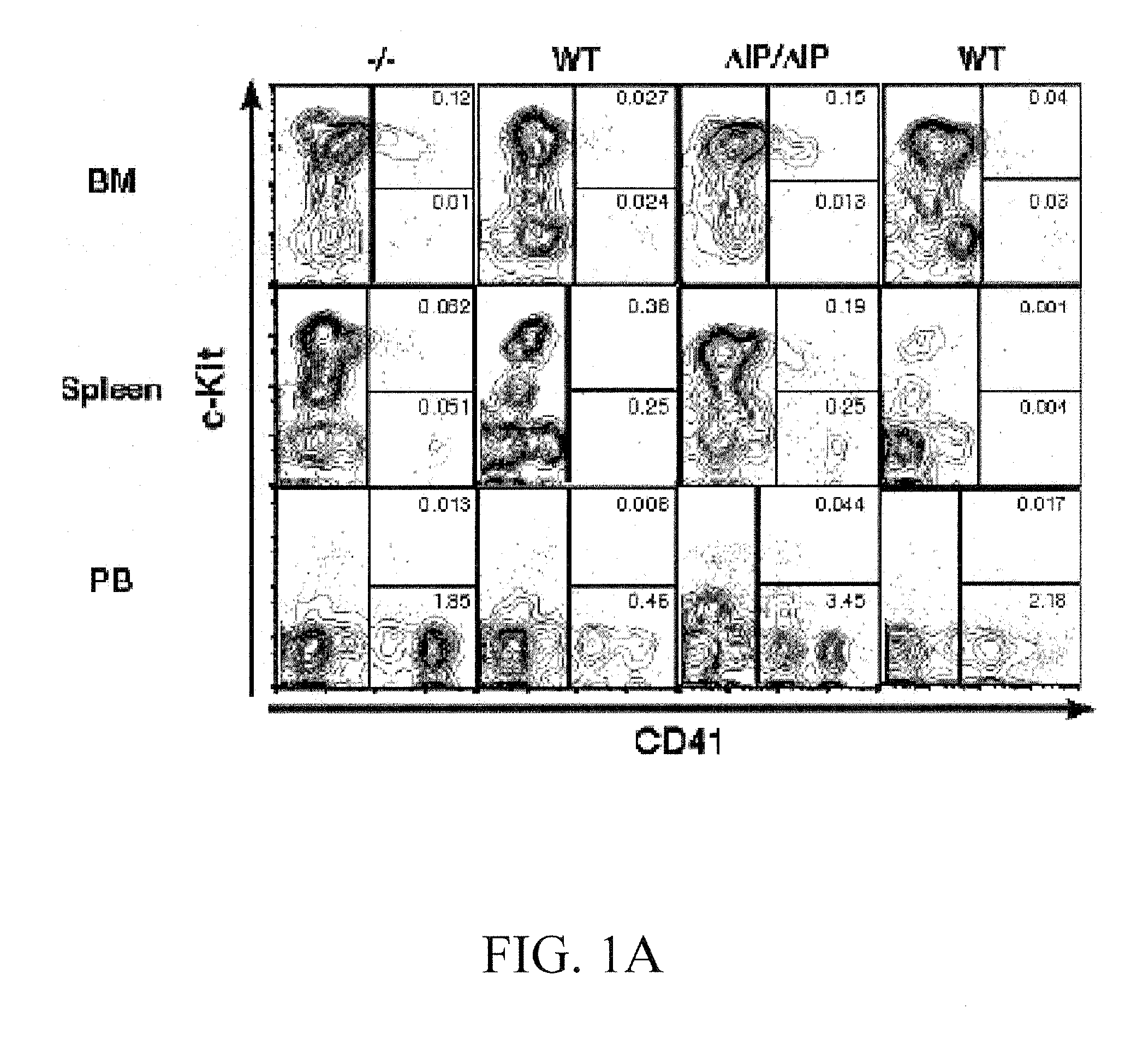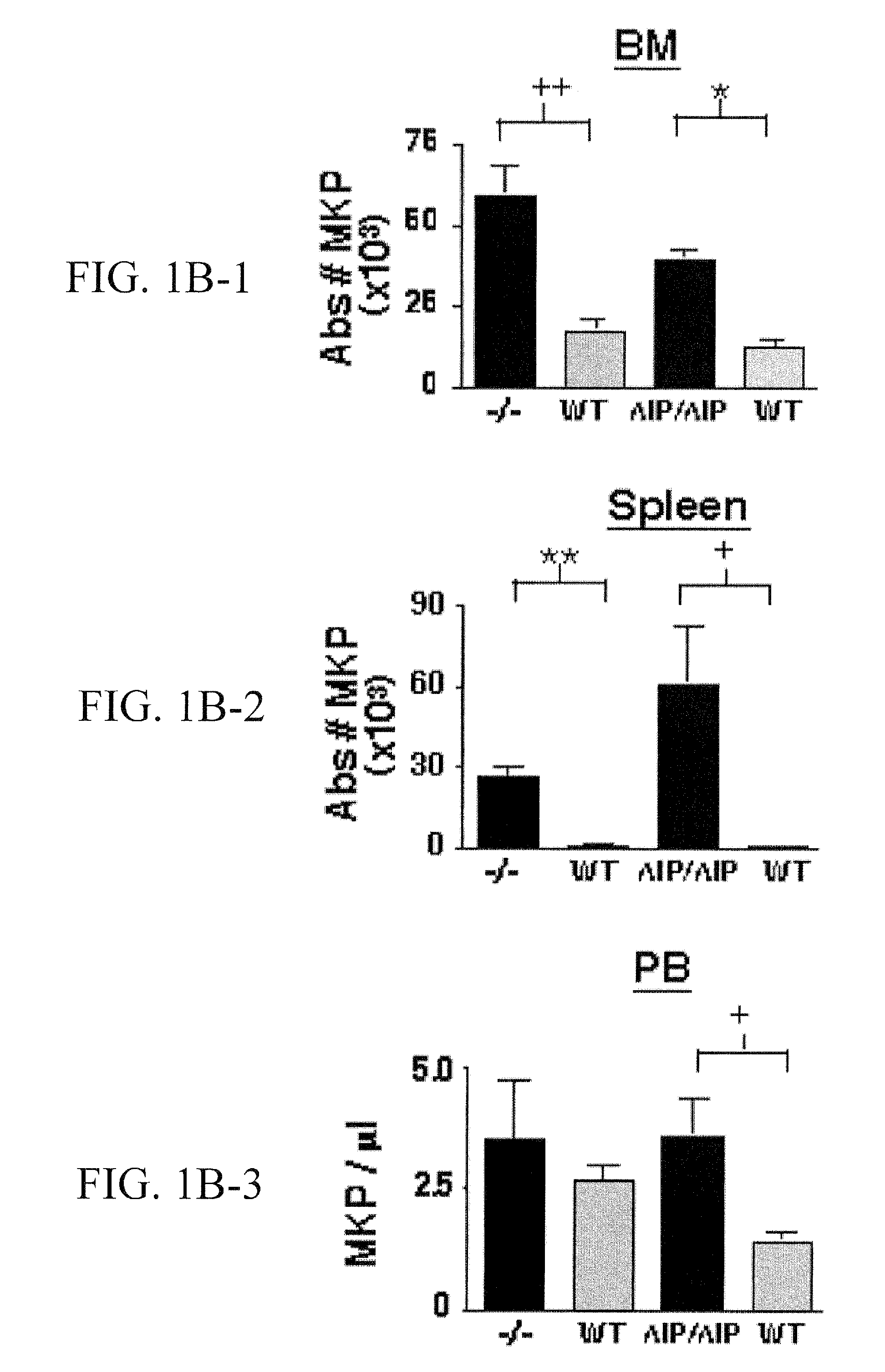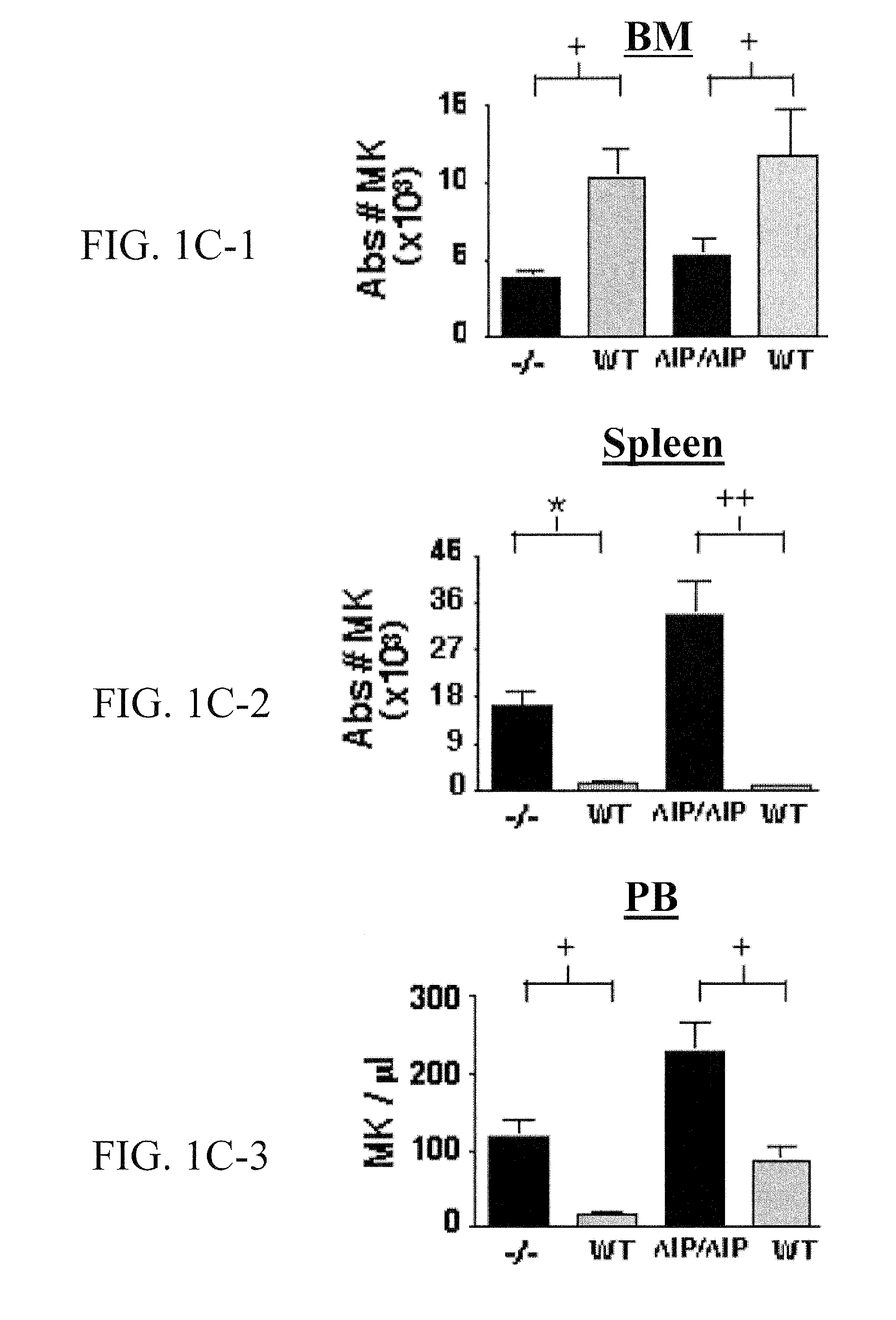SHIP-Deficiency to Increase Megakaryocyte Progenitor Production
a megakaryocyte and progenitor technology, applied in the field of ship-deficiency to increase megakaryocyte progenitor production, can solve the problem of significantly lower platelet production in ship-deficient mice, and achieve the effects of increasing megakaryocyte progenitors, reducing platelet production, and increasing mkp and mk numbers
- Summary
- Abstract
- Description
- Claims
- Application Information
AI Technical Summary
Benefits of technology
Problems solved by technology
Method used
Image
Examples
example 1
SHIP-Deficient Mice have Increased Numbers of MKP AND MK
[0208]BM, spleen, and PB from SHIP− / −, SHIPΔIP / ΔIP, and WT mice were analyzed by flow cytometry to determine the size of the megakaryocyte progenitor (MKP) and megakaryocyte (MK) compartment in vivo (FIG. 1A), using an immunophenotype defined by Hodohara and colleagues (Hodohara, K. et al. Blood, 2000, 95:769-775), Lin−cKit+CD41+, which contains the majority of CFU-Mk activity. In BM, an expansion of the MKP compartment in SHIP− / − and SHIPΔIP / ΔIP mice was observed (FIG. 1B). SHIP− / − and SHIPΔIP / ΔIP spleens also show higher percentages of MKP compared to WT littermates (data not shown). Thus, SHIP− / − and SHIPΔIP / ΔIP BM show a mean 18.1-fold and 50-fold increase, respectively, in the absolute number of MKP relative to WT controls (FIG. 1B). PB contained very few MKP, 3 to 5 MKP / μl, and their numbers were not significantly increased in SHIP− / − mice when compared to WT. However, MKP numbers were slightly, but significantly higher, ...
example 2
Platelet Levels Remain Unchanged in Ship-Deficient Mice
[0211]Despite the profound expansion of the MKP and the MK compartment in SHIP− / − and SHIPΔIP / ΔIP mice, they do not exhibit increased platelet levels relative to WT controls, when measured by hematolyzer or flow cytometry. Platelet levels limit megakaryocytopoiesis by sequestering TPO (Kaushansky, K. N Engl J Med., 1998, 339:746-754). Since platelet levels are not significantly increased in SHIP-deficient mice, it is possible that SHIP-deficiency increases the sensitivity of MK and MKP to steady-state TPO levels. Thus, proliferation and / or survival of MKP and MK is increased in SHIP mutant mice, leading to an expansion of the megakaryocytic compartment. Consistent with the present inventors' hypothesis, TPO stimulation of primary MK and c-mpl transfected Ba / F3 cells leads to SHIP phosphorylation and activation of downstream effectors of the cell cycle and survival (Geddis, A. E. et al. J Biol Chem., 2001, 276:34473-34479).
[0212]...
example 3
MKP and MK are Increased in BM and Spleen of SHIP-Ablated Mice
[0216]To observe if inhibition of SHIP during adulthood could also result in an increase in MKP production, the present inventors used the MxCre model (Wang et al. Science, 2002, 295:2094-2097). Briefly, the treatment of MxCRE+fl / fl mice with polyIC will lead to Cre recombinase expression through Type interferon-inducible Mx1 promoter, and deletion of the gene section between two loxP sites (Kuhn et al. Science, 1995, 259:1427-1429; Oberdoerffer et al. Nucleic Acids Res., 2003, 31:e140). In this case, the promoter and the first exon of the SHIP gene will be deleted resulting in the ablation of SHIP expression. As a control, MxCre− / SHIPfl / fl are treated with polyIC in the same manner than the MxCRE+fl / fl mice. Twenty-one days after the last polyIC treatment, mice were euthanized and the level of MKP was evaluated by flow cytometry (FIG. 5A). As observed in FIG. 5B-1, there was an increase in the percentage of MKP in the BM...
PUM
| Property | Measurement | Unit |
|---|---|---|
| concentration | aaaaa | aaaaa |
| critical threshold | aaaaa | aaaaa |
| length | aaaaa | aaaaa |
Abstract
Description
Claims
Application Information
 Login to View More
Login to View More - R&D
- Intellectual Property
- Life Sciences
- Materials
- Tech Scout
- Unparalleled Data Quality
- Higher Quality Content
- 60% Fewer Hallucinations
Browse by: Latest US Patents, China's latest patents, Technical Efficacy Thesaurus, Application Domain, Technology Topic, Popular Technical Reports.
© 2025 PatSnap. All rights reserved.Legal|Privacy policy|Modern Slavery Act Transparency Statement|Sitemap|About US| Contact US: help@patsnap.com



